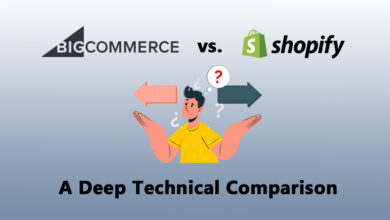Effective SEO campaigns – How is it achieved?

In the ever-evolving landscape of digital marketing, Search Engine Optimization (SEO) continues to stand as one of the most potent tools for driving organic traffic to websites.
A well-executed SEO campaign can significantly boost a website’s visibility, drive relevant traffic, and enhance brand recognition. However, achieving success in the realm of SEO requires a strategic and multifaceted approach.
In this article, we will delve into the intricacies of effective SEO campaigns and explore the key strategies that pave the way for success.
Understanding the Essence of SEO
Before delving into the strategies, let’s establish a clear understanding of what SEO entails. SEO is the practice of optimizing a website to improve its visibility on search engine result pages (SERPs).
The ultimate goal of SEO is to rank a website as high as possible on SERPs for specific keywords or phrases, thereby attracting more organic (non-paid) traffic. Effective SEO involves a combination of technical, on-page, and off-page strategies.
Keyword Research: Laying the Foundation
Any successful SEO campaign starts with comprehensive keyword research. Keywords are the terms and phrases that users enter into search engines when looking for information, products, or services.
Identifying the right keywords is crucial because they serve as the bridge between what users are searching for and the content you offer.
Begin by brainstorming a list of relevant topics related to your business or industry. Then, use keyword research tools such as Google Keyword Planner, SEMrush, or Ahrefs to identify specific keywords that have a high search volume and moderate to low competition.
Long-tail keywords, which are longer and more specific phrases, can often yield better results, as they cater to users with a clear intent.
On-Page Optimization: Crafting SEO-Friendly Content
Once you have a list of targeted keywords, it’s time to create high-quality, SEO-friendly content. On-page optimization involves optimizing individual web pages to rank higher and attract more organic traffic. Here are some key steps for effective on-page optimization:
- Quality Content Creation: Develop in-depth and relevant content that provides value to your target audience. High-quality content is more likely to be shared, linked to, and engaged with, all of which contribute to improved SEO.
- Keyword Integration: Incorporate your chosen keywords naturally within your content. Avoid keyword stuffing, which can lead to penalties from search engines.
- Meta Tags and Descriptions: Craft compelling Meta titles and meta descriptions for each page. These elements appear on search results and can greatly impact click-through rates.
- Header Tags: Use header tags (H1, H2, H3, etc.) to structure your content and make it more readable for both users and search engines.
- Image Optimization: Optimize images by using descriptive file names and alt tags. This helps search engines understand the content of the images.
Technical SEO: Enhancing Site Performance
Technical SEO focuses on the backend aspects of your website that impact its search engine visibility and user experience.
Ignoring technical issues can hinder your site’s ranking potential. Here are some crucial technical SEO considerations:
- Site Speed: A fast-loading website is not only user-friendly but also favored by search engines. Compress images, minimize code, and leverage browser caching to improve site speed.
- Mobile Friendliness: With the mobile-first indexing approach adopted by Google, having a responsive and mobile-friendly website is essential. Ensure that your site looks and functions well on various devices.
- URL Structure: Create clean and descriptive URLs that include keywords when possible. Avoid using complex parameters and unnecessary characters.
- Crawlability and Indexability: Ensure that search engine bots can easily crawl and index your site. Use tools like Google Search Console to identify and fix crawling issues.
- XML Sitemap: Create and submit an XML sitemap to search engines. This file lists all the pages on your site and helps search engines understand its structure.
Off-Page SEO: Building Authority and Backlinks
Off-page SEO involves actions taken outside of your website to improve its search engine rankings. One of the most crucial elements of off-page SEO is building high-quality backlinks.
Backlinks are links from other websites to your site, and they signal to search engines that your content is valuable and trustworthy.
- Link Building: Focus on acquiring backlinks from reputable and relevant websites. Guest posting, influencer outreach, and content partnerships can help you secure valuable backlinks.
- Social Media Engagement: While not a direct ranking factor, social media engagement can indirectly influence your SEO efforts. Sharing your content on social platforms can lead to increased visibility and potential backlinks.
- Online Directories and Listings: Ensure your business is listed accurately on online directories and local listings. Consistent and accurate NAP (Name, Address, and Phone) information is important for local SEO.
Content Marketing Strategy: Fueling SEO Success
Content marketing and SEO go hand in hand. A well-planned content marketing strategy can not only attract and engage your target audience but also boost your SEO efforts.
- Diverse Content Formats: Create a variety of content types, including blog posts, infographics, videos, podcasts, and more. This diversification caters to different user preferences and can attract a wider audience.
- Evergreen and Updated Content: Invest in evergreen content that remains relevant over time. Additionally, regularly update existing content to keep it accurate and valuable.
- Internal Linking: Strategically link between different pages on your website. Internal linking helps search engines understand the hierarchy and relationships between your content.
- User Intent Alignment: Craft content that aligns with user intent. Understand what users are looking for when they search for specific keywords and cater your content to address those needs.
Monitoring and Analytics: Tracking Progress
An effective SEO campaign is not a one-time effort but an ongoing process. Regularly monitoring your campaign’s progress is essential to ensure you’re heading in the right direction and making necessary adjustments.
Use tools like Google Analytics and Google Search Console to gain insights into various metrics, including:
- Organic Traffic: Track the amount of organic traffic your website receives. Monitor changes over time and identify trends.
- Keyword Rankings: Keep an eye on your keyword rankings in search engine result pages. Identify keywords that are performing well and those that need improvement.
- Click-Through Rates (CTR): Analyze the CTR of your pages’ titles and meta descriptions. Experiment with different titles to improve CTR.
- Bounce Rate: Monitor your bounce rate to assess the quality and relevance of your content. A high bounce rate could indicate that users aren’t finding what they’re looking for.
- Conversion Rates: Ultimately, SEO aims to drive conversions. Track the conversion rates of different landing pages to evaluate their effectiveness.
Adapting to Algorithm Updates
Search engine algorithms are not static; they frequently undergo updates to improve the quality of search results.
Staying up-to-date with these changes is essential to maintaining your SEO success. Google, for example, releases major updates like Panda, Penguin, and more recently, BERT, that can significantly impact search rankings.
When algorithm updates occur, it’s crucial to analyze their impact on your website’s performance.
If your rankings or traffic are affected, adapt your strategies accordingly. Focus on creating high-quality, relevant content that aligns with the latest algorithm’s guidelines.
Conclusion
Effective SEO campaigns are the result of a strategic blend of keyword research, on-page optimization, technical excellence, off-page efforts, content marketing, and continuous monitoring.
By carefully orchestrating these elements and adapting to the evolving digital landscape, businesses can unlock the potential of SEO to drive organic traffic, enhance brand visibility, and achieve lasting online success.
Remember, SEO is not a sprint; it’s a marathon that requires dedication, patience, and a commitment to delivering value to your audience.



